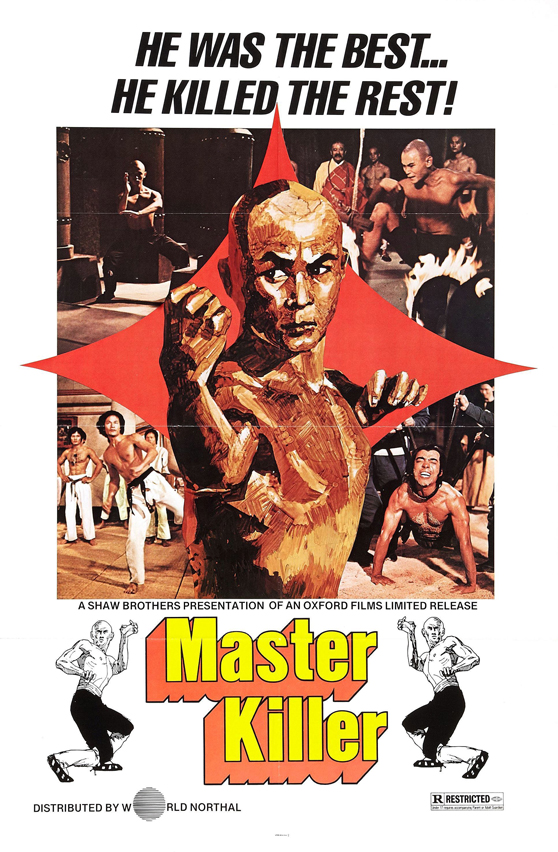
Anyone familiar with the hip-hop super-group the Wu-Tang Clan knows that “The 36th Chamber of Shaolin” (a.k.a. “Shaolin Master Killer”), directed in 1978 by Liu Chia-Liang, is essential viewing for any martial arts movie fan. This movie started the whole “good-guy-gets-his-butt-kicked-and-undergoes-martial arts-training-to-exact-vengeance” storyline that’s been used so many times in the martial arts movies since (i.e., the American “Karate Kid” movies). In it, anti-Manchu patriot San Te (Gordon Liu) is a humble country boy who is cast out of his village when Manchu soldiers (led by the villainous Lo Lieh) slaughter his parents, orphaning him. He manages to make it to the famous Shaolin Temple, where he is nursed back to health by the monks living there, and soon undergoes a rigorous and dangerous regiment of training to master the 35 “chambers” (styles) of kung-fu. In seven years, he completes his training, mastering all 35 styles, invents a brand-new weapon (the three-section staff), and suggests creating a 36th chamber – to spread kung-fu beyond the Shaolin Temple’s walls and bring it to the masses. The whole story is pretty formulaic (what martial arts movie from the ’70s doesn’t have a formulaic plot?), but what gets this movie going is its rousing training sequences. These are not the run-of-the-mill stuff we’re used to seeing in these movies. San Te’s quest to become a martial arts warrior is a tortuous journey of self-actualization, a kind of virtue commonly lacking in the genre; San Te actually becomes a better person as a result of his experiences at the Shaolin Temple. Most grind-house cinema aficionados love this movie (Wu-Tang Clan co-founder the RZA in “The Wu-Tang Manual” does an entire section on the martial arts movies that influenced his development of the Wu-Tang Clan and much of their underlying philosophy).
